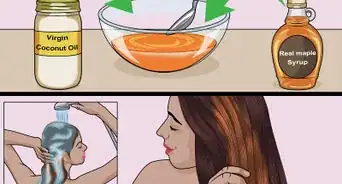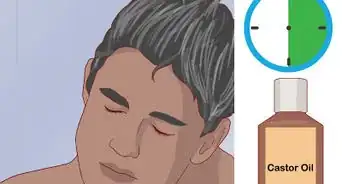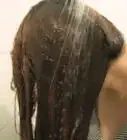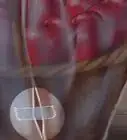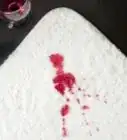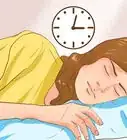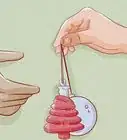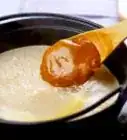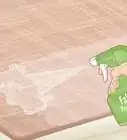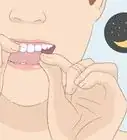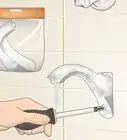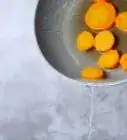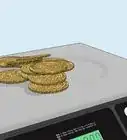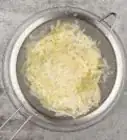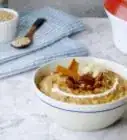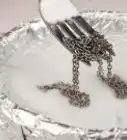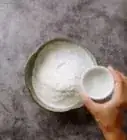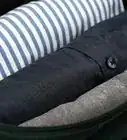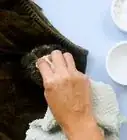X
wikiHow is a “wiki,” similar to Wikipedia, which means that many of our articles are co-written by multiple authors. To create this article, 9 people, some anonymous, worked to edit and improve it over time.
There are 7 references cited in this article, which can be found at the bottom of the page.
This article has been viewed 48,258 times.
Learn more...
Do you have fine hair, bleached hair, or hair that just dissolves after a certain length? Try strengthening your hair with a gelatin hair mask to see if that will help give your hair body and shine.
Steps
-
1
-
2If your regular hair products include silicones, clarify your hair.[3]Advertisement
-
3Mix the gelatin with a little cold water so that there are no lumps and let it sit. The gelatin grains will expand in water and eventually have the consistency of thick applesauce or mashed potato. Use as little cold water as you can in this step - try four teaspoons of water to start off with.
-
4Measure twice as much silicone-free and protein-free conditioner as there is gelatin into a second container and heat it gently. Don’t let it boil.
-
5Mix the gelatin grains into the hot conditioner and add coconut oil. The bloomed gelatin will dissolve into the hot conditioner, leaving your conditioner slightly thicker than it was when cold. The coconut oil will melt into the conditioner.[4]
-
6Test the temperature, then apply to the hair while warm or hot as follows:[5]
- Hair growing out of the crown, root to tip.
- Ends of the hair and mid-sections of the hair.
- Roots of the hair.
- Hair can be dipped into the mixture, or the mixture can be applied to the hair like papier mâché. It is easier to apply using your hands, but this can get messy.
-
7As the gelatin cools and sets, it will be harder to apply. With practice, it gets easier to apply it while it’s still warm.
- Long hair can be carefully wound up into a bun while the gelatin is hot, but this means that the length of the hair does not get heated by the hairdryer and won't be as effectively conditioned.
- If the gelatin cools and sets, rewarm it with your hands or hotter gelatin from the pot.
-
8Wash your hands.[6]
-
9Use a hairdryer to help set the gelatin. Do not touch or move the hair while drying it, only move the hairdryer so that all areas can be heated.
- This is particularly useful if you have let it set at room temperature and the gelatin has 'beaded' on your hair.
- Do not leave this mask on for longer than half an hour.
-
10When dry and hot, rinse your hair under warm water to start rehydrating the gelatin. Let the water soak into the gelatin before you start touching your hair.
-
11Rinse hair until water runs clear.[7]
- You should not need to use shampoo at this point, because you have mixed your gelatin with hair conditioner.
-
12Apply hair gel with glycerin in it and let your hair air-dry.
- If you have a glycerin allergy, try another humectant such as aloe vera gel.[8]
Advertisement
Warnings
- Gelatin is difficult to get out of fabric, so wear an old button-down shirt in case of drips.⧼thumbs_response⧽
- Gelatin is an animal by-product. Do not use this mask if you are a vegetarian or vegan. Try a beer rinse instead.⧼thumbs_response⧽
- Coconut oil can cause breakouts.⧼thumbs_response⧽
- Be careful when applying the hot mask to your hair, as if the mask is overheated it could cause discomfort to your hands. Avoid getting the mask in your eyes.⧼thumbs_response⧽
- For the next few days after, your hair will need extra moisture. Style your hair with water and a hair gel containing glycerin, and avoid hair dryers.
- You may find that you need to apply a moisturising hair mask to your hair (with humectants, without protein or silicones) after using the gelatin hair mask.
⧼thumbs_response⧽
Advertisement
Things You'll Need
- Old shirt which buttons up down the front.
- 1/2 tsp of coconut oil
- 2 tsp of powdered gelatin
- Water
- Microwave-safe container
- Conditioner which does not have silicones or proteins in it
- Hairdryer
References
- ↑ https://www.webmd.com/men/features/benefits-protein#1
- ↑ https://hairstylecamp.com/protein-overload-in-hair/
- ↑ https://www.webmd.com/beauty/features/hair-washing
- ↑ https://mommypotamus.com/gelatin-hair-mask/
- ↑ https://www.youtube.com/watch?v=qGfan_lM_JE
- ↑ https://www.cdc.gov/handwashing/when-how-handwashing.html
- ↑ https://www.youtube.com/watch?v=qGfan_lM_JE
- ↑ https://www.healthline.com/health/beauty-skin-care/hair-mask-for-dry-hair#takeaway
About This Article
Advertisement















-Protein-Hair-Mask-Step-16.webp)

